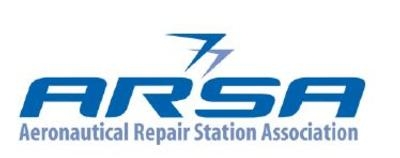Finds Different Regions Of The Country Face Different Issues
The Aeronautical Repair Station Association (ARSA) and the Aviation Technician Education Council (ATEC) have released a new report examining the technical worker shortage facing the aviation industry. The study, Policy Solutions for a Stronger Technical Workforce, was authored by researchers at the College of William and Mary’s Thomas Jefferson Program in Public Policy and sheds new light on the challenges of finding, retaining and growing a world-class aviation maintenance workforce.

In the face of expanding global markets and increased demand for a highly skilled, government-certificated labor force, business must overcome the looming retirements of more experienced employees, skill gaps, regulatory limitations on training programs and – most importantly – data sources that are inadequately designed for defining the problem.
In seeking to analyze personnel, certification and education data at the regional level, the researchers encountered a familiar hurdle: frustratingly insufficient data that is often inaccurate and inconsistently captured.
The study found that there are inconsistent employment trends among many of the regions, with only the Southern and Western-Pacific regions showing periods of steady growth over the last decade. Wages have remained relatively flat since the Great Recession (2008-2013). Education completion rates have been on the rise for most regions.
Based on these results ARSA developed three hypotheses to explain the variation, for which future research is required.
First, for regions with employment growth but little to no increase in postsecondary completion or vice-versa, employment migration from neighboring states may be occurring. Second, the growing technical workforce demand, coupled with the transferability of maintenance and electronic skills sets, has led to heightened competition among industries for the growing number of student graduates. Third, despite a rise in student completion rates, a larger share of the existing workforce is retiring, thus the replacement rate is insufficient to meet employment demand.
As a result, the authors recommend companies and interest groups build strategic partnerships on local and regional levels between employers, educational institutions and community and government organizations.
“This report is all about defining a problem: the desperate need for more qualified, well-trained men and women to funnel into aviation careers,” said Ryan Goertzen, ATEC’s president and president of Spartan College of Aeronautics and Technology. “To achieve that we must figure out how to really capture what’s going on in the workforce. Incorrect data does not help anyone and masks the real problem facing our industry today: finding skilled workers.”
The regional approach taken by the researchers provides a blueprint for the aviation community to grapple with workforce challenges. “The research team took advantage of some great examples from across the industry to give us this basic roadmap for success: think globally, act locally,” said Christian A Klein, ARSA’s executive vice president. “I know that’s an old, familiar phrase, but it’s especially useful here. The only way for businesses, government and teaching institutions to solve big, daunting national workforce problems is to look in their surrounding communities and get active in a planned, strategic way.”
“We have a passion for aviation, of course, but first and foremost we have a responsibility to our students,” Goertzen continued, speaking of the aviation maintenance training schools represented by ATEC. “We know we’re giving them valuable skills and preparing them for success in a number of technical fields, but for us true success is getting our graduates employed in the aerospace industry. This report is a part of that work.”
 ANN's Daily Aero-Term (04.24.24): Runway Lead-in Light System
ANN's Daily Aero-Term (04.24.24): Runway Lead-in Light System ANN's Daily Aero-Linx (04.24.24)
ANN's Daily Aero-Linx (04.24.24) Aero-FAQ: Dave Juwel's Aviation Marketing Stories -- ITBOA BNITBOB
Aero-FAQ: Dave Juwel's Aviation Marketing Stories -- ITBOA BNITBOB Classic Aero-TV: Best Seat in The House -- 'Inside' The AeroShell Aerobatic Team
Classic Aero-TV: Best Seat in The House -- 'Inside' The AeroShell Aerobatic Team Airborne Affordable Flyers 04.18.24: CarbonCub UL, Fisher, Affordable Flyer Expo
Airborne Affordable Flyers 04.18.24: CarbonCub UL, Fisher, Affordable Flyer Expo



